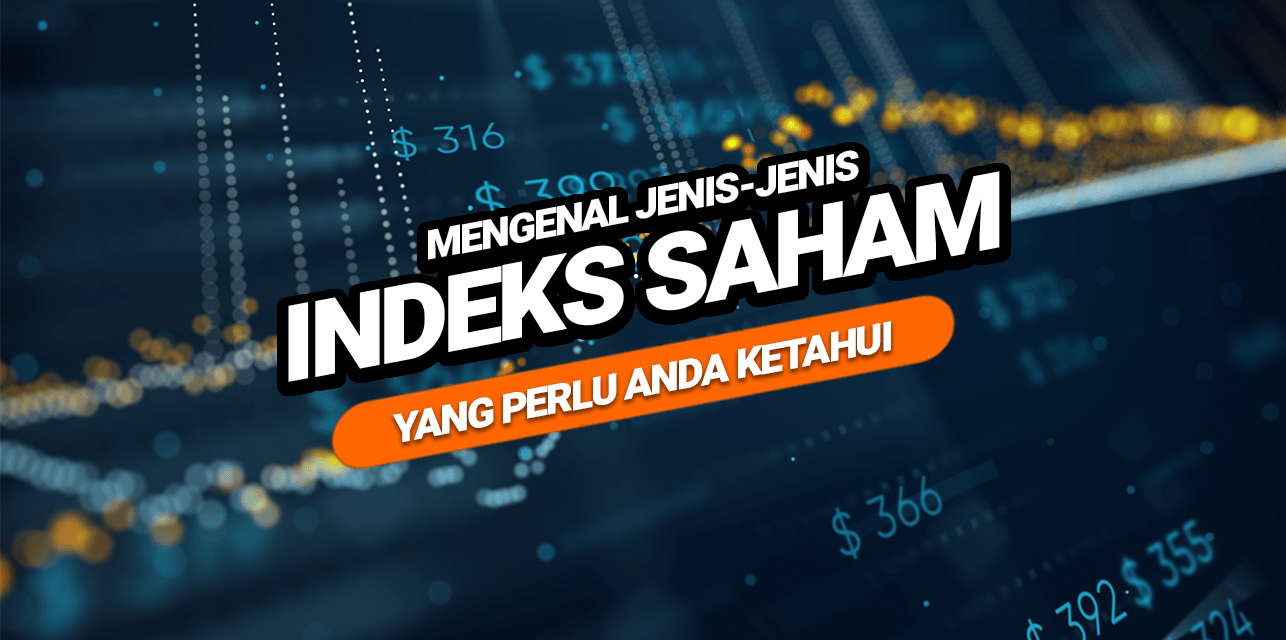Is the index the stock itself or is it different from the stock? The answer is clearly different. The index is a measure presented in statistical form with information presentation in the form of changes in price movements of a group of stocks. Reading the movement of the index means reading the movement of the market in general.
The values of this index will be influenced by the prices of the stocks listed in the index portfolio, complete with the weight of each stock. The more stocks in circulation, the greater the value and weight.
This is what then influences index movements. In the world of shares, there are many types of indices that refer to indices that move specifically. Here are several types of stock indices that you need to know.
Composite Stock Price Index (IHSG)
IHSG is the main index used as an indicator of the movement of all stocks listed on the Indonesia Stock Exchange (IDX). Specifically for IHSG, its movement is influenced by stocks with large capitalization. Because of the large size of these stocks, large-cap stocks are often also called index movers or index-driving stocks. Some of these index movers include ASII, AALI, BBRI, BBCA, BMRI, GGRM, HMSP, SMGR, and UNVR.
Even though it is an indicator of the movement of all stocks listed on the IDX, it should be noted that when IHSG is rising, it does not always mean that stocks are also rising. The opposite also applies, when IHSG falls, it does not mean that all stocks are falling. There are still stocks with small capitalizations that move in the opposite direction to IHSG.
Main Board Stock Index and Development Board Index
BEI has divided two large groups of issuers based on size. First, the Main Board Stock Index group and the second is the Development Board Index. These two groups are created to provide investors with an overview of the movement of each index. The Main Board Stock Index is an index for issuers with large sizes and a good performance history.
Then on the other hand, the Development Board Index contains issuers that have not met the qualifications for listing in the first group. Not meeting the qualifications referred to here is a condition where the issuer actually has good prospects. However, in reality and its current condition has not produced much profit.
Sectoral Index
Next is the sectoral index that indicates the movement of a group of stocks from certain sectors. These sectors have been divided into agriculture, industry, property, mining, finance, trade, services, and so on.
If you are interested in investing or trading, understanding sectoral indices is also important. Taking sectoral indices into consideration can help you predict losses or risks that may be faced in the future.
LQ45 Index
The index used as an indicator of the movement of 45 stocks that have been selected based on the level of liquidity, capitalization, and the largest transaction frequency on the IDX is the LQ45 Index. Stocks included in the LQ45 index list will be reviewed every six months and must have been listed on the IDX at least three months previously. Another requirement is that stocks included in the LQ45 index list must have entered the top 60 of the total stock transactions on the regular market over the past year.
Jakarta Islamic Index (JII)
JII is useful for investors who want to invest in stocks with sharia principles. JII itself consists of 30 stocks engaged in industrial sectors that are practically in accordance with Islamic sharia principles. In other words, the stocks here are halal stocks because the issuer's operations do not contain elements of usury, which means that the issuer's capital acquisition does not come from debt.
The existence of JII can help you use it as a benchmark when analyzing and assessing the performance of a portfolio of sharia stocks. With a sharia system, these stocks are not burdened with debt interest, their capital structure is healthy, and they are more halal from a sharia perspective.
KOMPAS100 Index
Also listed on the IDX, the KOMPAS100 Index consists of 100 stocks representing 70-80% of the total capitalization value of all stocks on the exchange. The KOMPAS100 Index can provide a projection of the direction of the index's movement. Another benefit of this index is that it can help investors manage stock-based funds.
Business Index-27
The next index is the Bisnis-27 Index released by the IDX in 2009 as a form of cooperation with Bisnis Indonesia. The stocks included in this index have high liquidity and are selected based on their fundamental and technical performance.
Some examples are stocks that have good operating profit, net profit, and Return on Asset (ROA), DER, and Return on Equity (ROE). Also included are value, volume, transaction frequency, and stock capitalization that are taken into consideration.
PEFINDO25 Index
Also formed as a result of cooperation between the IDX and PEFINDO25, this stock price index consists of various small and medium-sized company issuers that are specially selected. The considerations are the financial performance and liquidity of the company. The PEFINDO25 index displays a reference that shows the performance of small company shares.
The goal is to provide investment guidelines for prospective investors there. With a fairly long selection stage for issuer shares, the competition is also quite tight among small companies to become the 25 best shares.
SRi-KEHATI Index
In 2009, BEI conducted another collaboration with the KEHATI Foundation which then resulted in the SRI-KEHATI index. The purpose of this index is to provide additional information for investors regarding companies that can be economically profitable but at the same time can also guarantee the quality of environmental sustainability when running their business operations.
There are three stages applied to select 25 business stocks that guarantee the two main qualities above. First, a selection will be carried out in terms of its core business. KEHATI itself will assess whether the business is free from elements that have the potential to damage the environment, such as pesticides, tobacco, nuclear, alcohol, or genetically engineered organisms. The next stage is the selection of the issuer's financial aspects, then checking the company's fundamental aspects.
Those are some types of stock indexes that you need to know. From here, a brief conclusion can be drawn that the index is a measuring tool that has many functions and can be developed according to the agenda of a particular group or the market itself. This is evident from several terms or types of indexes that are the result of collaboration with BEI to present more adequate statistical data for the ecosystem in the stock market.
Especially for those of you who are still considered beginners in the world of stocks, several types of these indexes are mandatory for you to know. This is so that you do not feel lost when reading articles or books about stocks, including discussing to increase your knowledge about the world of stocks itself.
Visit GIC Indonesia to get information about the world of trading. You can also join us in the Telegram Community GIC Trade and Telegram Channel GIC Trade. Don't forget to check the Youtube account GIC Indonesia which is full of lots of information, and follow our Instagram account to get information about various interesting webinars that you can follow.
 Last:
Last: 







